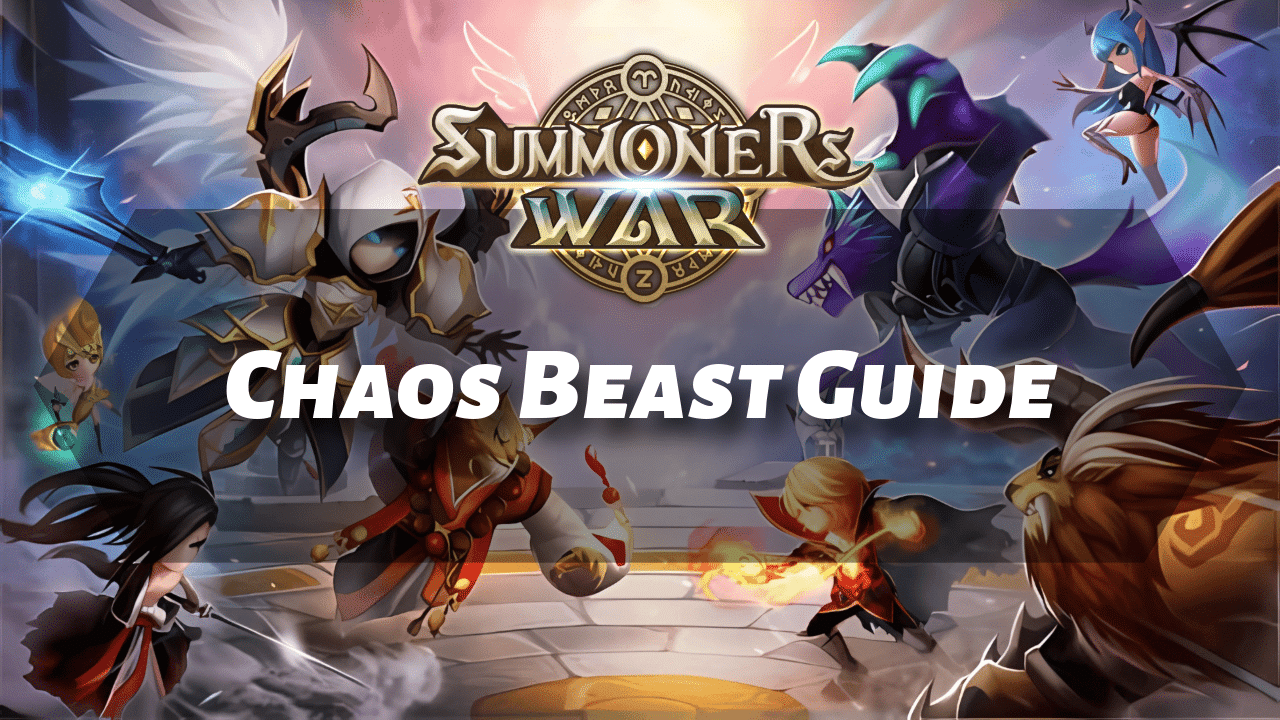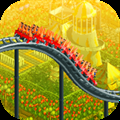
Introduction to the Chaos Beast (Khi’zar Kha’jul)
The Chaos Beast, known as Khi’zar Kha’jul, is a powerful three-headed entity featured in the Raid of Worlds, a co-op mode within the larger Rift of Worlds in Summoners War. This Summoners War Chaos Beast Guide covers the fundamentals of the encounter, designed as an advanced PvE challenge where players must work together to defeat a shared boss. Unlike the solo battles found in standard Rift Beast content, the Raid of Worlds requires three Summoners to form a raid team, each contributing a set of monsters to battle the Chaos Beast simultaneously. This format encourages strategic team composition and coordination, particularly at higher difficulty levels.
Accessing the Chaos Beast encounter requires unlocking the Rift of Worlds, which becomes available after completing all Scenario Maps on Normal difficulty, unlocking the Dimensional Rift, and participating in at least one battle there. This progression then opens up the World Boss, and once that challenge is attempted, the Raid of Worlds becomes accessible.
The raid itself is structured into five levels of increasing difficulty: R1 through R5. New players begin at R1, with each subsequent level unlocked after successfully completing the previous one. R4 and R5 present significantly greater threats, with the Chaos Beast employing more powerful skills, debuffs, and mechanics that test both rune quality and monster synergy.
Defeating Khi’zar Kha’jul provides critical progression resources. These include runes of various specialized types—such as Combat, Determination, Improvement, Accuracy, and Tolerance—as well as enchantment gems and grinding wheels used to fine-tune rune sub-stats. Additional rewards include mystic scrolls, invocation stones, stones of metamorphosis, and a 500,000 mana bonus upon victory. These materials are essential for improving monster performance and enabling late-game optimization. The Chaos Beast plays a pivotal role in Summoners War’s progression system, bridging the gap between mid-game readiness and endgame preparedness.
Khi’zar Kha’jul Skills and Stats
Khi’zar Kha’julBreath of
Doom
Attacks all enemies and decreases their Attack Power and Attack Speed for 2 turns. Puts them in an oblivious state for 2 turns after the attack. The harmful effect activation rate will increase as the level of the Raid increases.
Crush of
Doom
Targets the frontline of the enemy and unleashes an attack that ignores all beneficial effects. The damage increases substantially as the target’s Defense decreases. This attack will target the backline if there are no Monsters left in the frontline.
Rageful
Roar
Targets the frontline of the enemy and unleashes an attack that ignores all beneficial effects. The damage increases substantially as the target’s Defense decreases. This attack will target the backline if there are no Monsters left in the frontline.
Total
Annihilation
Attacks all party members whenever the boss loses 50% of the HP. All harmful effects will be removed and the boss’s stats will substantially increase when this skill is activated. Crush of Doom and Breath of Doom will gain an additional hit whenever Total Annihilation is activated.
Carnage
When the boss wipes out an entire team of Monsters, its attack speed increases, and it begins targeting all nearby enemies.
Destroyers
Revenge
(Passive)
The damage of the next attack increases based on the number of the enemy’s turns. After the attack, the damage resets.
Ruler of
Chaos
(Passive)
At the start of the battle, the boss’s three heads will share an attack gauge through its chaotic power. Additionally, it reduces the effectiveness of HP-proportional damage by sharing a single HP pool among all three heads.
StageLevelElemHPATKDEFSPDResAccuCriR1 (per head)50Pure296,950799133216430%0%0%R2 (per head)60Pure370,3051200166717130%0%0%R3 (per head)70Pure444,1651797200217930%0%0%R4 (per head)80Pure678,2702997233118630%0%0%R5 (per head)90Pure863,4003996267019230%0%0%
Understanding the Chaos Beast and Mechanics
The Chaos Beast, Khi’zar Kha’jul, is the primary boss of the Raid of Worlds in Summoners War, and understanding its mechanics is essential for consistent performance and rewards. The Raid features five difficulty levels (R1 to R5), each escalating in challenge. While early stages provide a foundation for strategy and team building, R4 and R5 are significantly more demanding and are typically the focus for experienced players aiming for high-tier rewards.
In the Raid of Worlds, three Summoners cooperate in a single battle against the Chaos Beast. Each player contributes a team of six monsters, organized in a 4×2 formation—four monsters on the front line and two on the back line. The Chaos Beast has a shared HP bar across its three heads, and all participants can inflict damage on this singular health pool. Any harmful effects applied by one player’s monsters are shared among all three heads, making team synergy and debuff consistency vital. Leader skills from all three Summoners are also shared, though only Regular and Elemental leader skills are effective in this mode.
The entire battle is automated, with AI-controlled monster actions. At the start, each Summoner’s team faces a different head of the Chaos Beast. If a player’s team is fully defeated, the head they were targeting will shift its attacks to the nearest remaining monsters from the surviving teams. The Chaos Beast is immune to control effects, including Stun, Freeze, Sleep, Provoke, and Continuous Damage, necessitating strategic reliance on other debuffs like defense break and attack down.
The Chaos Beast wields several powerful abilities that test team endurance and strategy:
Breath of Judgement targets all enemies, applying Attack Power Down and Attack Speed Down for 2 turns.
Spraying the Ruins focuses on the front line, bypassing all reinforcement effects and dealing damage proportional to the target’s Defense.
Roar of Anger is triggered when an enemy accumulates 16 Rage stacks. It removes all reinforcement effects, attacks, and heals the boss based on the number of buffs removed.
Total Disaster activates when the boss’s HP drops below 50%, causing a significant increase in its stats.
Carnage is triggered when an entire team is eliminated. The boss gains Attack Speed and begins attacking the closest remaining enemies.
Destroyer’s Revenge (Passive) increases the damage of the next attack based on how many turns the target has taken.
Sovereign of Chaos (Passive) synchronizes the attack gauge of all three heads at the start of the battle. After this phase, the HP is split among the three heads.
Performance in the Raid is ranked from F to SSS based on total score, with higher ranks offering better rewards. To achieve S or higher, the Chaos Beast must be fully defeated. Scores in the A range are possible by inflicting heavy damage without necessarily killing the boss. Upon victory, players receive a 500,000 Mana Stone bonus and a variety of loot including:
Grindstones and Enchanted Gems of varying rarities (Normal to Legend), used to enhance rune sub-properties.
Runes with two-set bonuses: Combat (ATK +8%), Determination (DEF +8%), Improvement (HP +8%), Accuracy (ACC +10%), and Tolerance (RES +10%).
Mana Stones, Rainbowmons, Summoning Stones, Mystical Scrolls, Shapeshifting Stones, and Social Points.
Crystals, such as Burning Fire, Frozen Water, Breaking Wind, Blinding Light, Total Darkness, and Condensed Magic. Reaching a rank of S or higher also awards a Crystal of Pure Magic.
Mastering the Chaos Beast’s mechanics is a key part of progressing in the late game, as the Raid of Worlds offers some of the most essential resources for rune optimization and endgame team development
Preparing Your Team for the Chaos Beast
Successfully defeating the Chaos Beast, Khi’zar Kha’jul, in the Raid of Worlds requires strategic planning, team synergy, and close coordination between the three participating Summoners. Each player contributes six monsters arranged in a 4×2 formation, and together, these teams must be optimized to withstand the boss’s devastating mechanics while maximizing damage output.
A well-balanced team composition is crucial. Combining damage dealers, support units (such as healers, buffers, and debuffers), and durable front-line tanks helps ensure survivability and efficiency. Because harmful effects are shared across all three of the Chaos Beast’s heads, monsters that can apply defense breaks, attack breaks, slow, or other non-immune debuffs provide significant value. Crowd control effects like Stun, Freeze, Sleep, and Provoke are ineffective, as the Chaos Beast is immune to them. Continuous Damage effects are also nullified, so it’s important to select monsters that rely on direct burst or sustained physical damage instead.
Leader skills play a major role in this encounter. Only Regular and Elemental leader skills are effective, and they apply across all teams, making coordination between Summoners critical. Combining complementary leader skills can strengthen the entire group, enhancing survivability, speed, or offensive capabilities depending on the team’s strategy.
Understanding the Chaos Beast’s abilities helps inform monster selection and positioning. “Breath of Judgement” reduces attack power and speed, while “Spraying the Ruins” deals defense-scaled damage to the front line and ignores buffs. Because of these threats, front-line monsters must have strong defensive stats. The boss’s passive, “Destroyer’s Revenge,” increases its damage based on the number of enemy turns taken, which may influence rune choices and speed tuning. While Violent runes are generally avoided in Rift Beast encounters due to excessive turn cycling, they can still be viable if procs are managed effectively and don’t trigger outside the boss’s groggy state.
For higher raid levels like R4 and R5, monsters with specialized roles and optimized rune builds become increasingly important. Farmable monsters such as Chasun, Colleen, Hwa, Kro (2A), Xiong Fei, and Dias form a solid foundation. Colleen, for example, provides healing and attack break and can be built with Violent and Vengeance runes, focusing on HP and Defense. Kro (2A) is an efficient damage dealer when runed with Rage and Blade, emphasizing Attack and Crit Damage.
MihyangTYPE: SUPPORT
Xiao Lin
TYPE: ATTACK
Theomars
TYPE: ATTACK
Support monsters like Mihyang (Water Sky Dancer) excel in this fight due to her ability to cleanse harmful effects and extend buffs with her skill “Dance of Mirage.” She performs well even under Oblivion, which disables passives, further highlighting her reliability. Building her with SPD/ATK%/ATK% and Violent runes ensures consistent healing and skill availability, and skill-ups help reduce cooldowns for improved utility.
Front-line monsters such as Xiao Lin can also thrive with the right rune setup—typically a Vampire build to sustain through damage dealt. Damage dealers like Theomars can also be effective in most Rift Beast battles, excluding those where elemental disadvantages apply.
For R5, rune and stat requirements become more stringent. Front-line monsters should have at least 30,000 HP and 1800 Defense for a two-monster front line, or 28,000 HP and 1600 Defense for three. Back-line monsters should meet minimum thresholds of 18,000 HP and 900 Defense. Damage dealers in the back must also prioritize high attack stats to ensure consistent contributions during damage phases.
By aligning team compositions, understanding the boss’s mechanics, and building monsters with appropriate runes and stats, your team can successfully confront and overcome the Chaos Beast in the Raid of Worlds. Consistent cooperation and strategic refinement are the keys to progressing through higher raid levels.
Strategies and Tips for Success
Defeating the Chaos Beast, Khi’zar Kha’jul, in the Raid of Worlds demands strategic preparation, smart team-building, and close coordination among the three participating Summoners. Each phase of the battle tests different aspects of your team’s survivability, utility, and damage output, making adaptability and communication critical for success.
Applying shared harmful effects is one of the most important tactics. Because all three heads of the Chaos Beast share debuffs, skills that reduce attack power and attack speed are especially valuable. These weaken the boss’s overall output and make incoming damage more manageable across all teams. Avoid relying on crowd control effects such as Stun, Freeze, Sleep, Provoke, or Continuous Damage, as the boss is immune to these.
The skill Spraying the Ruins targets the front line with defense-scaled damage that ignores buffs, making it essential to place high-defense, high-HP monsters in the front row. For R5, front-line monsters should meet minimum stat thresholds—30,000 HP and 1800 Defense for two monsters, or 28,000 HP and 1600 Defense for three. Ensuring these stats helps your front line endure the boss’s focused attacks.
The Chaos Beast builds rage each turn, and upon reaching 16 stacks, it unleashes Roar of Anger, stripping all buffs and healing based on the number removed. While buffing is a standard part of most teams’ strategies, it’s important to be aware of this timing and plan accordingly—cleansing or preventing too many buffs from stacking can help mitigate this healing effect.
When the Chaos Beast drops below 50% HP, it enters a more dangerous phase. During this time, it gains significant stat increases, making its attacks deadlier and its defenses harder to break through. Teams need to ensure they have both sustain and damage to handle this phase effectively, especially as mistakes or poorly timed skills can result in team-wide wipes.
The boss’s Carnage mechanic activates if an entire team is defeated. This not only increases the boss’s attack speed but also redirects aggression to the nearest remaining monsters, often leading to cascading defeats. Survival of all three teams is critical—not just for rank, but for maintaining a manageable level of boss aggression.
Another mechanic, Destroyer’s Revenge, causes the boss’s next attack to scale in power based on the number of turns a target has taken. This can impact rune choices and turn-cycle strategies. While Violent runes can increase turn frequency, they do not count as boss turns outside the groggy state, making them viable if properly managed.
Certain monster roles are especially effective in this encounter. Cleansers like Mihyang (Water Sky Dancer) are highly useful, as her active cleanse, Dance of Mirage, is unaffected by Oblivion—the debuff that disables passive skills—and also provides buff extension and harmful effect reduction. She performs best when built with Violent runes and SPD/ATK%/ATK%, and her third skill benefits greatly from cooldown reduction via skill-ups.
ColleenTYPE: SUPPORT
Chasun
TYPE: SUPPORT
Support monsters such as Colleen and Chasun are reliable picks for healing and buffing. Colleen brings a multi-hit heal and attack break while also contributing utility with Violent/Vengeance runes and HP/Defense-focused builds.
Kro (2A)TYPE: ATTACK
Hwa
TYPE: ATTACK
Damage dealers like Kro (2A), Hwa, Xiao Lin, and Theomars bring consistent output when runed correctly. Kro is best with Rage/Blade and ATK%/Crit DMG%/ATK%, while Hwa, with Blade/Fatal and HP/Crit DMG%/ATK%, provides turn control through attack bar reduction. Xiao Lin excels with a Vampire set, particularly in the front line, and Theomars offers strong single-target burst with elemental versatility.
Rune choices should support each monster’s role while meeting minimum defensive requirements. Rift of Worlds rune sets—Combat, Determination, Improvement, Accuracy, and Tolerance—can all be effective when used to boost key stats. Coordination among team members is vital, especially with leader skills. Only Regular and Elemental leader skills are active, so planning these carefully enhances your team’s survivability and synergy.
Success in the Raid is ranked from F to SSS, and your rank determines the rewards. The boss must be defeated to earn S-tier ranks (S, SS, SSS), while knocking out the boss without defeating it yields A-tier ranks (A-, A, A+). Higher ranks reward better loot, including Crystals of Pure Magic used for crafting and progression.
Despite the complexity of this encounter, it is possible to succeed using mostly farmable monsters such as Chasun, Colleen, Hwa, Kro (2A), Xiong Fei, and Dias. With the right builds, good communication, and a strong understanding of boss mechanics, teams can steadily climb the ranks and farm valuable rewards from the Chaos Beast encounter.
Rewards from Defeating the Chaos Beast
Defeating the Chaos Beast (Khi’zar Kha’jul) in the Raid of Worlds provides a range of valuable rewards that contribute to long-term progression in Summoners War. The reward pool is consistent with those from other Rift Beasts, offering a mix of rune-related items, enhancement materials, elemental crystals, and monster-related resources.
Crystal Mana StoneAmong the most sought-after rewards are the specialized Rift runes. These include Combat Runes, which boost the entire team’s attack by 8%; Determination Runes, which increase defense by 8%; Improvement Runes for 8% more HP; Accuracy Runes that grant 10% increased accuracy; and Tolerance Runes that raise resistance by 10%. These runes come in 2-set bonuses, allowing them to be stacked or combined with other sets. In addition to full runes, players may also receive rune pieces, which can be crafted into complete runes over time.
Enhancement materials like Enchantment Gems and Grinding Wheels are also key rewards. These allow players to customize sub-properties on runes, improving their efficiency and usability. The quality of these materials increases with the raid level, with R5 providing access to Rare, Hero, and Legendary tiers. This makes higher-level raids especially important for endgame optimization of rune sets.
Elemental and neutral crystals are another vital reward type. Players can earn Burning Fire Crystals, Frozen Water Crystals, Breaking Wind Crystals, Crystals of Blinding Light, and Crystals of Total Darkness, depending on the raid boss. Additionally, Condensed Magic Crystals and the more rare Crystal of Pure Magic are obtainable. The Crystal of Pure Magic is awarded only when a team achieves a minimum rank of S, emphasizing the importance of strong team performance and boss defeat.
Monster-related rewards include Arcenmon and Rainbowmon for leveling and evolution, Summoning Stones, Mystical Scrolls for summoning new monsters, and Stones of Metamorphosis, which are used to change monster appearances through transmogrification. These rewards support both early-game development and advanced monster building.
Other rewards include Mana Stones and Social Points, which are consistently useful for a variety of in-game functions, such as rune upgrades and summoning.
Crystals obtained from the raid can be used in the Craft Building to create items like Reappraisal Stones, which are used to reset rune sub-stats, and Legendary Chests containing high-value loot. Crystals are also crucial for crafting and evolving the Homunculus, a customizable monster unique to Rift content.
To maximize rewards—especially higher-grade Grindstones, Enchantment Gems, and Crystals of Pure Magic—players should aim to participate in higher levels of the Raid of Worlds, such as R4 and R5. Ranks are determined based on team performance and overall score, ranging from F to SSS. Only by defeating the Chaos Beast can players earn the highest ranks—S, SS, and SSS—which provide the best quality and quantity of loot.













